Thinking of Buying a C6 Corvette? – Here’s What You Need To Know
Spring is here at long last, and you’re ready to take the plunge and purchase a Corvette! You’ve pondered your choices and you are prepared to purchase a sixth-generation Corvette because you’ve seen the prices drop steadily since the C7 was introduced a few years back, and you recognize that the C6 is truly a track-capable beast that offers incredible power at an increasingly affordable price.
If this sounds like you, and if you are now trying to navigate the hundreds of sixth-generation Corvettes that are for sale to find the one that’s right for you, then we’ve found each other at the perfect moment. If you’re still considering your options – maybe even considering something other than a Corvette (gasp!) for your summer fun – then we’ve caught up with you just in time too!
For everyone else – from current C6 owners to prospective Corvette owners of any generation, this article is intended to provide some insight into the experience of Corvette ownership, and give you some valid reasons why a sixth-generation Corvette might be right for you!
Introducing the C6 Corvette
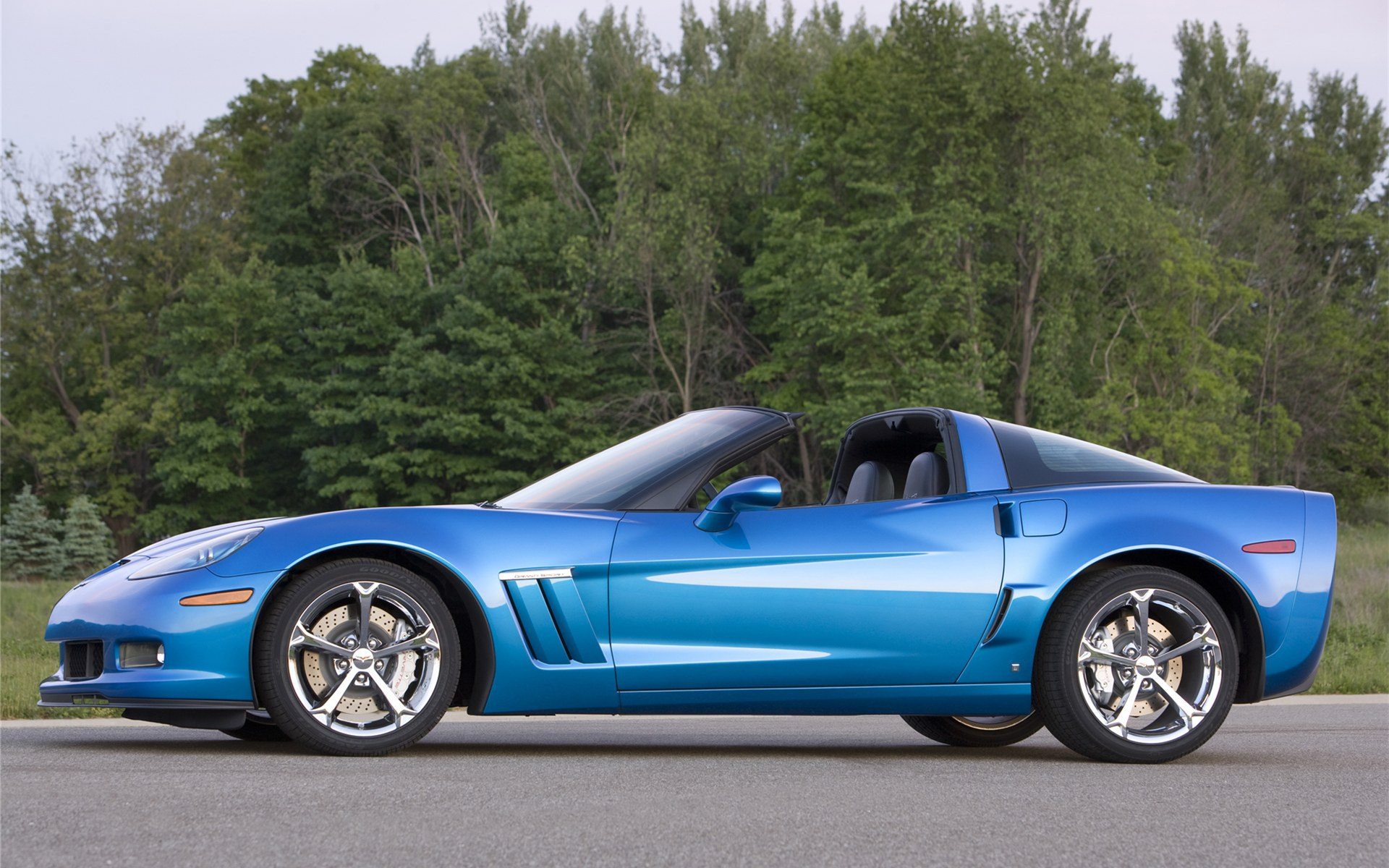
The sixth-generation (C6) Corvette was introduced in 2005 as a follow-up to the wildly-successful fifth-generation platform. The fifth-generation Corvette, which had been first introduced in 1997, was the generation that catapulted the Corvette platform from moderate sports car to a vehicle that rivaled some of the best European sports cars on the market, and at a fraction of the price.
When developing the sixth-generation Corvette, Chevrolet adopted the mantra, “If it ain’t broke, don’t fix it.”
For all intents and purposes, the C6 wasn’t a re-design or re-imaging of the earlier model, but rather an evolution of it. Everything that helped make the C5 platform a commercial success was carried forward into the new C6 model, and the rest of the design simply improved upon the earlier model, eliminating those “flaws” which were deemed outdated or undesirable.
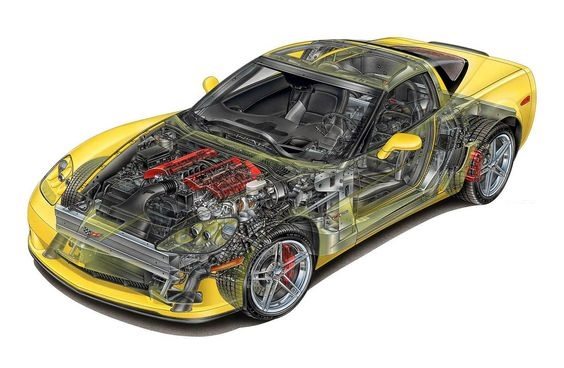
Chevrolet retained the same front engine/rear transaxle design that had been introduced in the C5, and instead turned their focus to the car’s body and exterior. Where the C5 featured a soft, rounded design on virtually every surface of the car, the C6 featured a more “chiseled” appearance with better defined surfaces. This included sharper-edge coves behind each of the front wheels, more defined bodylines throughout the platform, and steeper, more pronounced fender peaks like those previously seen on the third-generation Corvette.
The wheelbase of the C6 was increased to 105.7 inches (compared to the C5 Corvette’s 104.5 inch wheelbase) but the car’s overall length was actually decreased from 179.7 inches (C5) to 174.6 inches (C6.) This decision was made to make the platform more attractive to European customers as well as to reduce some of the “bulk” of the earlier design which would, in turn, aid in the car’s overall performance.
The C6 was also the first Corvette to feature exposed headlights since the first-generation Corvette. While this design change was initially met with considerable resistance by Corvette enthusiasts, the decision was based on data captured from the racing program and proved to improve aerodynamics during more extreme driving conditions. Today, exposed headlights on a Corvette are commonplace, and several aftermarket manufacturers have even developed exposed headlight conversion kits for older-gen Corvettes. In 2005 however, (the year the C6 was introduced,) even loyal fans questioned Chevrolet’s decision to break with more than 40 years of tradition.
Year By Year – What Are the Differences?
2005
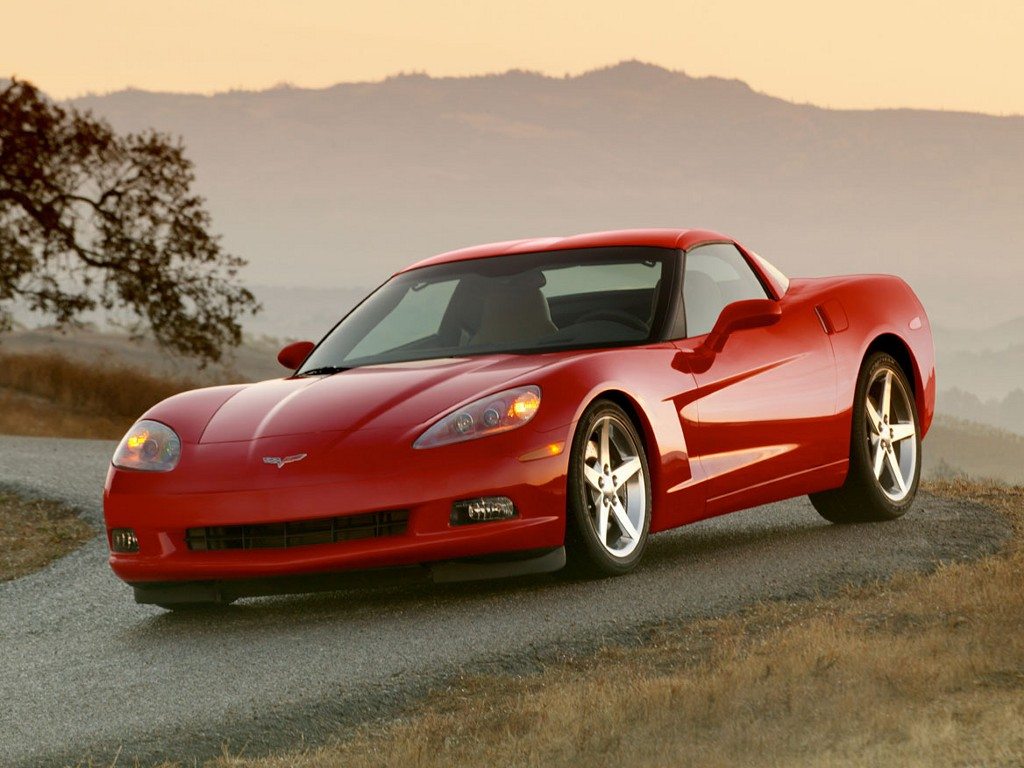
2005 was the inaugural year for the C6 Corvette. For its first year, the Corvette was only offered as a coupe or convertible in base trim. The car included a number of new features over the outgoing C5 including push button start, an available navigation system, electric door releases, an improved interior, a power-closed rear hatch and exposed headlights.
Where the outgoing C5 featured an LS1 engine that produced 350 horsepower, the 2005 C6 introduced the LS2 engine, which increased the Corvette’s engine output to 400 horsepower. The 2005 Corvette was offered with either a manual or automatic transmission. Even after its initial introduction in 2005, most automotive critics agreed that the 2005 Corvette was superior in performance and handling over its fifth-generation predecessor.
The C6’s suspension package was revised and calibrated to provide excellent handling and a comfortable ride. Three suspension packages were offered:
- The standard suspension which featured a careful balance between comfort and handling,
- The selectable Magnetic Selective Ride Control, which gave drivers the option to adjust how the car handled via a selector switch mounted on the car’s center console,
- The Z51 Performance package, which provided the new Corvette a level of suspension and handling on par with the outgoing C5 Z06 Corvette.
Chevrolet built a total of 37,372 ‘Corvettes during the 2005 model year including 26,728 Coupes and 10,644 Convertibles.
2006
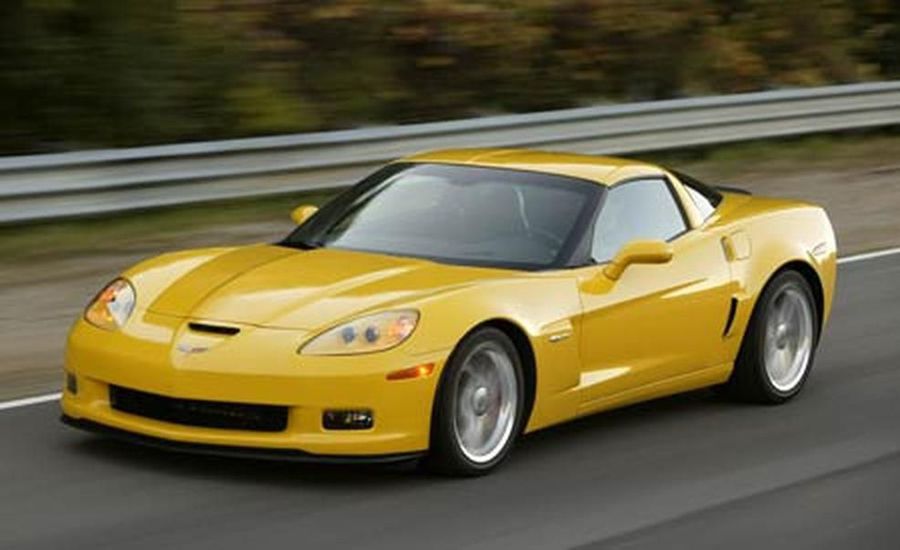
While there were few additions to the 2006 model year, the option that were added included a 6-speed automatic transmission with paddle shifters and XM Satellite Radio in Corvettes equipped with a Bose stereo system. Additionally, two new colors were introduced for 2006 – Velocity Yellow and Monterey Red Metallic.
The big announcement for the 2006 model year was the return of the highly-anticipated Z06 Corvette. The Z06 featured a 7.0 liter, 427 cubic inch LS7 small-block V8 engine rated at 505 horsepower and 470 lb-ft of torque. When introduced in 2006, it was the most powerful production Corvette available on the market. It was also a fixed-roof Corvette (unlike the base coupe model, all of which have a removable top) for added structural rigidity and improved aerodynamics.
Total production for 2006 was 34,021 units, of which 16,598 were coupes, 11,151 were convertible and 6,272 were Z06 edition Corvettes.
2007
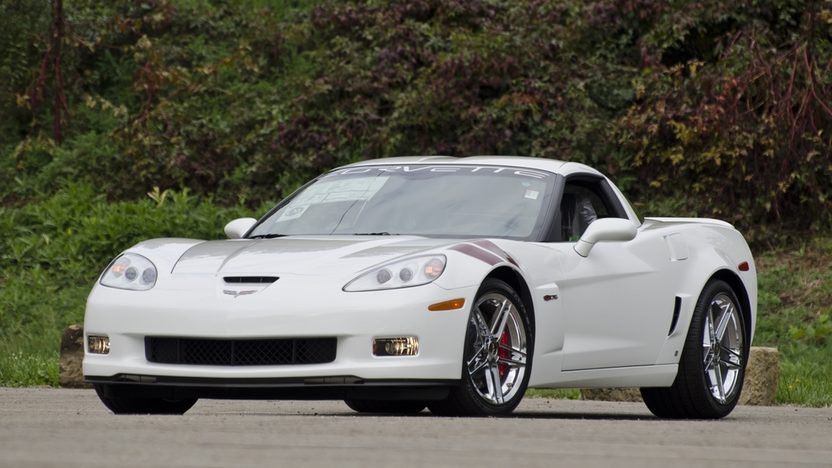
The 2007 model year saw few changes to any of the available Corvette models. A couple of new options were introduced including steering-wheel-mounted radio controls on the right spoke of the steering wheel. These controls enabled drivers to adjust volume, seek radio channels up and down the AM and FM bands, and to scroll thru selected preset stations.
Two limited-edition Corvettes were introduced in 2007:
- The Ron Fellows ALMS (American Le Mans Series) GT1 Z06 Corvette which was built to honor famed Corvette Racing driver Ron Fellows. It was the first-to-be-signed special-edition Corvette in the history of the brand – with each unit carrying Ron Fellows autograph. The car was finished in Arctic White with a Monterey Red interior, fender stripes and trim.
- The second was the Indy Pace Car Replica Corvette. This special edition model was limited to 500 units and was finished in Atomic Orange.
For 2007, a total of 40,561 Corvettes were built, including a total of 21,484 coupes, 10,918 convertibles and 8,159 Z06 Corvettes.
2008
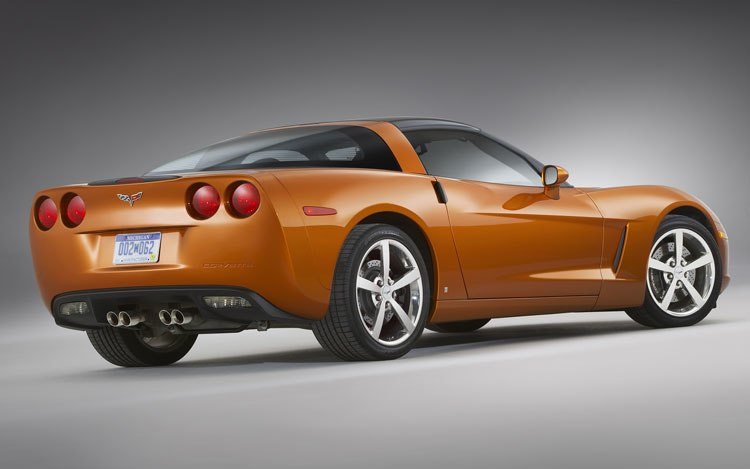
The most significant update to the 2008 model year was the introduction of the LS3 engine to all base model coupes and convertibles. The LS3 increased engine size from a 6.0L to a 6.2L V8, and increased engine output from 400 horsepower and 400 lb-ft of torque to 430 horsepower and 424 lb-ft of torque.
The 2008 also featured a new split-spoke wheel package on coupes and convertibles. An optional five-spoke wheel was also offered for the 2008 model year. The wheels came in a number of color options including Competition Gray, a polished finish or a chromed finish.
The interior of the 2008 Corvette also received some upgraded trim. All models received a revised “cyber”graphic pattern console trim plate, bright surrounds for the cupholder and manual shifter and brushed aluminum shifter and door release trim. Metal door sill plates were new (introduced late in 2007), and the floor mat retainers were simplified.
Lastly – this is an important item for anyone considering a 2008 Corvette – Hertz Fun Rental division ordered 500 RPO ZHZ Corvette coupes for the vehicle rental program. All 500 of these cars were finished in Velocity Yellow with black stripes and featured seven-spoke chrome wheels. (NOTE: These Corvettes are often available for sale across the country and may be listed at a lower asking price than other Corvettes. Please remember that these vehicles were used as part of Hertz’s rental fleet and may have been prone to more aggressive drivers than privately owned Corvettes.)
2009
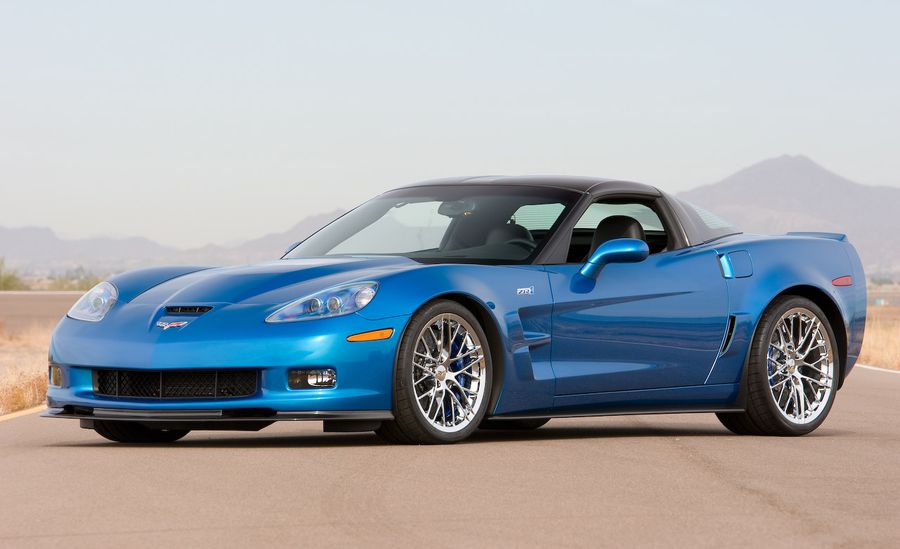
The most notable addition to the 2009 line-up was the introduction of the new Corvette ZR1.
The program had been announced by General Motors in December, 2007 and began production for the 2008 model year.
The car featured a supercharged LS9 engine which was rated at 638 horsepower. While the engine carried the same displacement as the LS3 engine (6.2 Liters), the LS9 was a new design with a 10.5-quart dry-sump oil lubrication system and an Eaton supercharger that pumped out 638 horsepower and 604 lb-ft of torque, making the LS9 the most powerful production engine ever built by General Motors.
The 2009 ZR1 Corvette was also the first Corvette in the brand’s history to carry a price tag of more than $100,000. Despite this sizable price tag, both Corvette enthusiasts and the automotive press recognized that the car was a bargain for the amount of power it produced, and it quickly became accepted as the new “King of the Hill” throughout the Corvette community.
Despite being widely accepted by fans and the press, the 2009 ZR1 Corvette accounted for just over 10% of total Corvette sales that year. In fact, all Corvette sales dropped by almost 50% over the previous model year with a total of just 16,956 units sold in 2009. Of these, 8,737 were coupes, 3,343 were convertibles, 4,400 were Z06’s and just 1,847 were ZR1 Corvettes.
2010
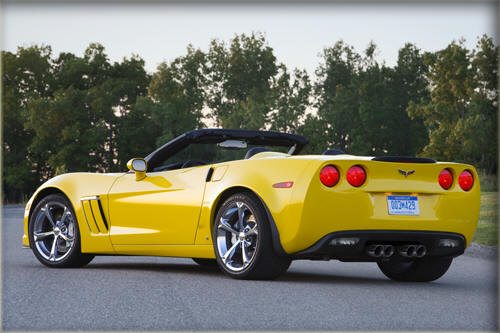
The 2010 model year saw the return of another Corvette moniker which had been absent since 1996.
The Grand Sport model, which was essentially a wide-body version of the base coupe with most of the styling/design cues of the Z06 was introduced as yet another alternative to the ever-growing Corvette stable. Although the Grand Sport featured the same 6.2 liter LS3 as the base coupe and convertible, the car provided owners with the Z51 suspension package that had been an option on older variants of the C6 as well as the a number of styling tweaks. Arguably, the Grand Sport model was one of the best looking Corvettes of the C6-generation.
As in 2009, unit sales of the 2010 Corvette continued to decline significantly over the previous year. For 2010, a total of just 12,194 units were sold, which included 3,053 coupes, 3,703 Grand Sport coupes, 1,003 Grand Sport convertibles, 518 Z06’s and 1,577 ZR1 Corvettes.
2011
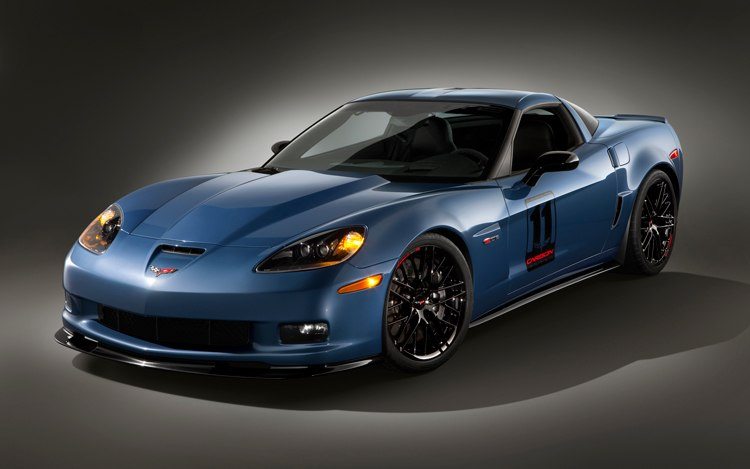
Little changed for the 2011 model year. There were a few additions including larger, cross-drilled brake rotors (13.4 inches in the front and 12.8 inches in the rear) which were offered as an option on the Corvette coupe and convertible, or included as part of the Magnetic Selective Ride Control package (RPO F55). Z06 Corvettes included the Z07 performance package.
The 2011 model year introduced another special edition model – the Corvette Z06 Carbon Limited Edition. This latest entry into the special-edition portion of the collector’s market was designed to celebrate Corvette’s 50th anniversary at Le Mans.
The Z06 Carbon Limited Edition Corvette featured the Z07 Performance Package, plus the introduction of a painted carbon fiber raised hood, a carbon fiber splitter and rockers. The cars mirrors and headlights were finished in black, and the exterior of all of the Carbon Limited Edition Corvettes were finished either in Supersonic Blue or Inferno Orange. The interiors of both cars included matching body-color stitching.
Sales improved just marginally over the 2010 model year with a total of 13,956 units which included 3,112 coupes, 780 convertibles, 5,212 Grand Sport coupes, 2,782 Grand Sport convertibles, 904 Z06’s and 1,720 ZR1 Corvettes.
2012
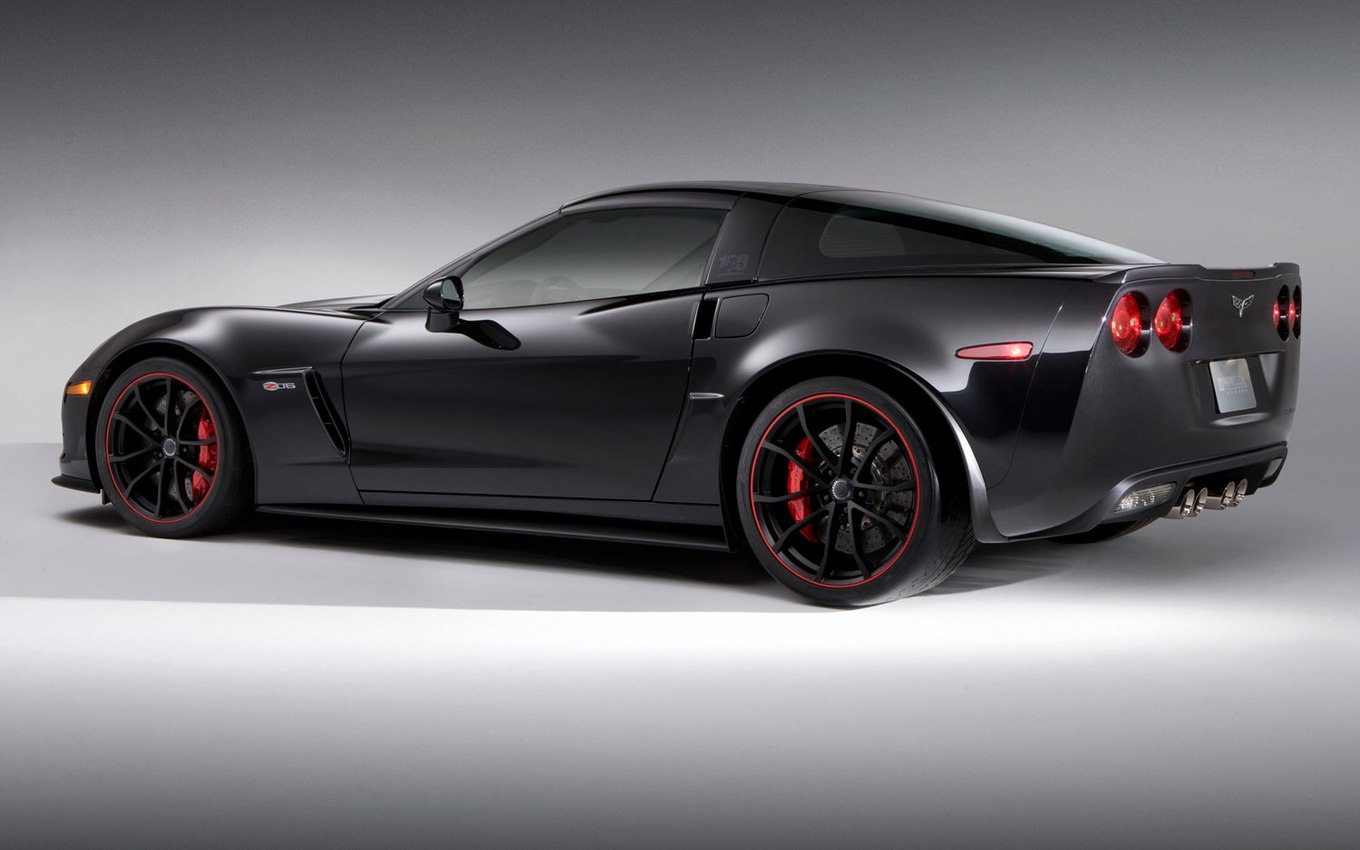
Although the seventh-generation Corvette Stingray was still two years away, GM’s focus on the next-generation Corvette’s development meant less time and effort was invested in refining the current-generation Corvette.
While the changes to the 2012 model year were somewhat limited, the base model Corvettes did receive and upgraded interior with improved driver and passenger seats. The Z06 model was offered to consumers with an optional full-length rear spoiler and carbon fiber hood options. It also received new wheels as part of the Z07 Performance Package. The ZR1 received an optional performance package and revised gear ratios.
The most significant product development for 2012 was the introduction of a Centennial Edition Corvette, which was available to consumers in all variants of the car, including the base coupe and convertible, as well as the Grand Sport, Z06 and the ZR1.
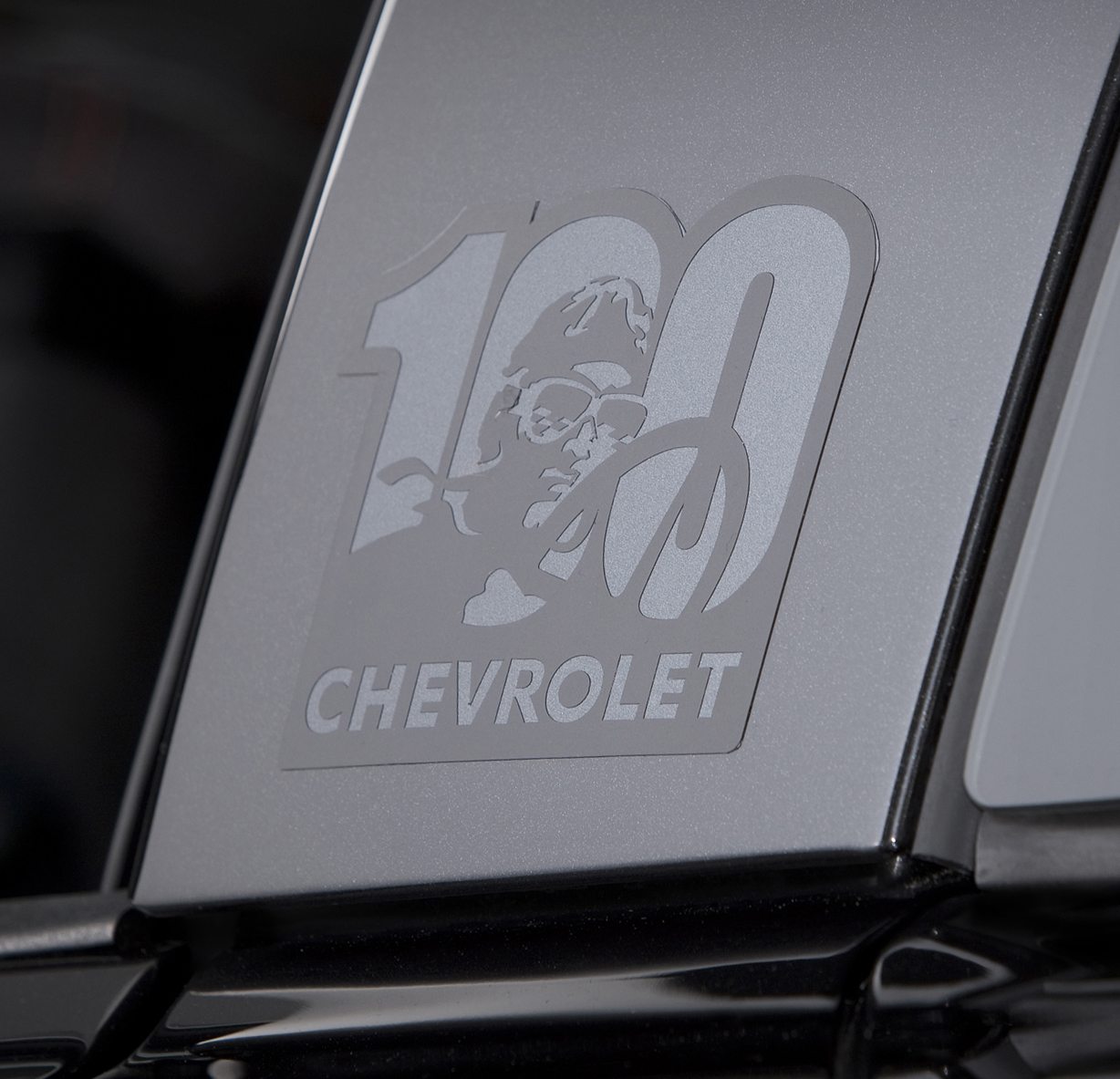
The Centennial Edition came finished exclusively in a Carbon Flash Metallic finish with satin-black graphics. Special badging graphics signifying Chevrolet’s racing history – including an image of Louis Chevrolet on the B-pillars – were added as accents to the cars finish. The number “100” replaced the traditional fluer-de-lis symbol on many of the Corvette hood and rear bumper emblems, but only on cars built with the Centennial Edition package.
The wheels were also finished in a satin black, and were sized specifically to the respective Corvette models – 18-inch front and 19-inch rear for the Coupe, Convertible and Grand Sport, and 19-inch front and 20-inch rears for the Z06 and ZR1 models. All models also received red brake calipers.
With the imminent arrival of the C7 Corvette just over a year in the future, sales of the 2012 Corvette were down once more. For 2012, Chevrolet sold just 11,467 Corvettes, which was approximately 25% of the total units sold just five year earlier in 2007. Of these, 2,820 were base coupes, 5,056 were Grand Sport coupes, 621 base convertibles, 2,268 Grand Sport convertibles, 478 Z06’s and just 404 ZR1 Corvettes.
2013
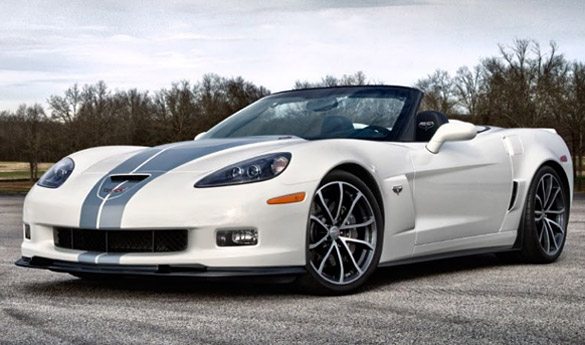
The 2013 model year marked the final year for the sixth-generation Corvette. It’s arrival was greeted with a lot of grandeur by Corvette owners and enthusiasts around the world, partly because it marked the 60th anniversary of Corvette and partly because it was the C6’s “swan song,” meaning that the C7 was about to become a reality.
Ultimately, the 2013 Corvette represented the pinnacle of the C6 generation, and in keeping with tradition of earlier generations that had come and gone before it, the final C6 Corvette would celebrate its departure with a very special, “special edition” model.
Evoking the heritage of early 427-powered Corvettes from generations past, the 427 Convertible Collection Edition model was built to take Corvette convertible performance to an entirely new level. It combined the convertible found in the base model and Grand Sport editions with elements from the Z06 and the ZR1 Corvettes, making it the fastest and most-capable convertible in Corvette’s history (at least until the introduction of the 2015 Z06 Corvette Convertible.) The car’s powertrain was the same as the Z06 coupe, including its 505 horsepower, 427 cubic-inch LS7 engine with dry sump. Also like the Z06 Corvette, the 427 Convertible was only offered with a manual transmission.
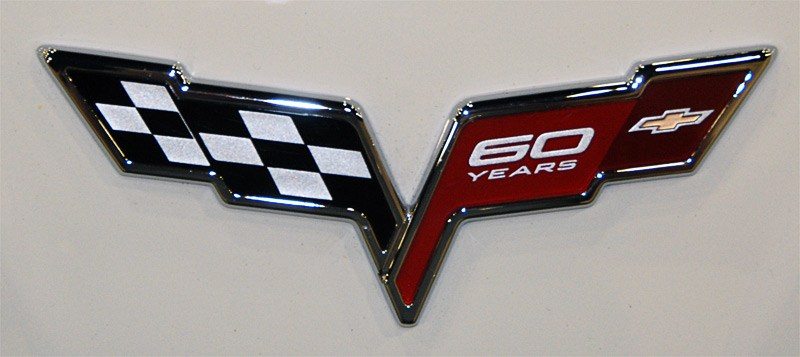
All Corvettes built in 2013, regardless of vehicle type or trim level, received special front and rear badging that replaced the fleur-de-lis portion of the crossed flags with a “60 Years” logo. While a special “60 Years” graphics package (RPO Z60) could be ordered that included optional side emblems on the front fenders and special floor mats with the 60th anniversary logo embroidered on them, GM included the special front and rear badging on all 2013 Corvettes to celebrate this significant milestone.
While the 2013 model year marked the end of the C6, it is interesting to note that the 2013 model year also offered five distinct models to consumers, the most models available in a single year in the history of the Corvette program. Sales remained flat in 2013 with a total of 13,466 units produced, including 2,597 base coupes, 4,908 Grand Sport coupes, 720 base convertibles, 1,736 Grand Sport convertibles, 2,552 427 convertibles, 471 Z06’s and 482 ZR1 Corvettes.
The C6 Buyers Guide

As we stated at the beginning of this article, for many of you reading this, the thought of buying ANY Corvette may be the culmination of a life-long dream. It is important therefore to make sure that the car you purchase is going to be one that provides you many years of happiness. While owning a Corvette can be an exhilarating, truly-one-of-a-kind experience, it can also be difficult and costly if you purchase a car without doing your homework first.
So where to start?
Whenever considering the purchase of a used vehicle, it is important to glean as much information about the car as possible. As a general rule, a car with the lowest possible mileage and fewest owners is always preferable. However, lower-mileage often translates into bigger dollars. Higher-mileage Corvettes, if properly maintained (and with documentation showing proper maintenance history) are also definitely worth considering. While these cars should definitely be looked at by someone with a trained and discerning eye, they can often be purchased at a far more affordable price and might be a great way to enter into Corvette ownership without breaking the bank.
Accidents/Damage
Like the C5 Corvette, the C6 utilized a drivable chassis with non-structural SMC (sheet molding compound/composite) panels bonded to an underlying structure. Unlike earlier Corvettes, which featured a body bolted to a steel frame, these newer Corvettes have components that are specifically mounted to the chassis via an epoxy-type bonding material. When looking at prospective purchase vehicle, check for mismatched paint, narrow or wide gaps in body panels and for paint overspray in the wheel wells.
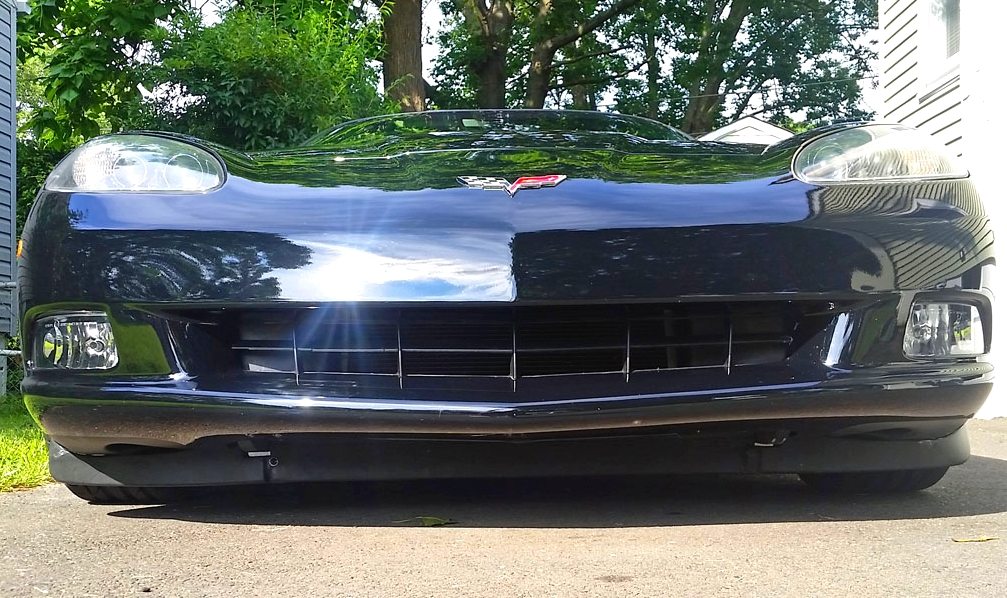
In addition to body panels, look for scrapes beneath the car. All sixth-generation Corvettes, save for those that are “garage queens” that have spent most of their lives tucked neatly away in a garage somewhere, will have at least a bit of road rash. Remember that all Corvette are going to have some amount of surface scrapes, but be weary of any cars that have significant damage to any sub-assemblies. Dings, dents, serious abrasions, etc., are all indicators of a potential problem, so evaluate each closely when looking at the car.
Also, while the car is in the air, check the aforementioned bonding material that secure body components to the chassis. If you notice any areas where the bonding material is a different color, that is a strong indicator of a potential repair and is definitely worth further investigation.
Here’s something worth noting: Because these cars sit so low to the ground, the plastic air dam (the three piece assembly near the front of the car that drives air into the radiator) is likely to be scarred, significantly scratched up, covered in road rash or may have already been replaced. Believe it or not, this is normal. In fact, all C6 owner manuals state the following:
Under normal operation, these components will occasionally contact some road surfaces (speed bumps, driveway ramps, etc.). This can be heard inside the vehicle as a scraping noise. This is normal and does not indicate a problem.
If the air dam has been replaced, you might actually give that Corvette greater consideration because it indicates that the current owner has spent the time and money to maintain his vehicle. This three-piece air dam actually drives air up-and-into the radiator. When these air dams wear out, some owners simply remove them reducing air flow thru the radiator. This can result in increased engine temps and overheating.
CarFax/AutoFax or Insurance Claim History
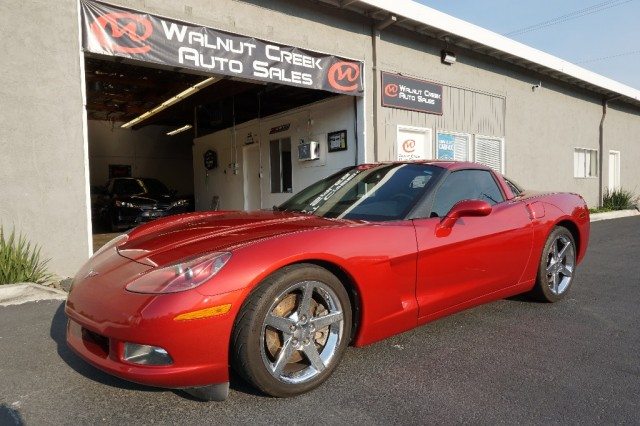
One of the most insightful things any prospective car owner can do is to obtain a vehicle history report on any C6 Corvette you might be considering. It will give you a detailed look at the car’s service and accident history. It will identify how many owners (before you, potentially) owned the car you are considering, for how long and how many miles they put on the car. It will show a complete vehicle service history including any recalls/service bulletin work that may have been performed. It will let you know if the car has been involved in an accident (or even multiple accidents) and/or if there any other concerns about the car that are worth noting (ex.// “rebuilt” or “salvage” title.)
Consider that the C6 Corvette (all years) is a late model production car and is definitely covered by services like CarFax. Most reports cost less than $50.00. While they may not tell you everything about the car, they definitely provide you a snapshot of the car’s history. This may help you make a more informed decision before investing any significant time or effort into that particular vehicle.
A couple things worth considering:
- One, if you are working with a dealership and they refuse to share a CarFax (or similar) report with you, be weary of that dealership! While there are certainly instances (especially with smaller dealerships) where these report are not immediately available, consider that these reports are incredibly easy to obtain (thanks to the internet.) They should be willing to provide you with this information as part of their service to you as a prospective customer.
- When dealing with a private owner, we strongly encourage you to obtain your own CarFax report. For most cars (and certainly for all sixth-generation Corvettes), the only information you’ll need is the year, make model and the VIN number. While sellers may already have a copy of the report that they are willing to share with you, obtaining your own copy ensures that you’ve got all the most current information from a neutral third party.
Vehicle Inspection
Before climbing behind the wheel of the car, take some time to give the car a thorough once-over, keeping a discerning eye open for a number of specific items, including:
Tires and Brakes
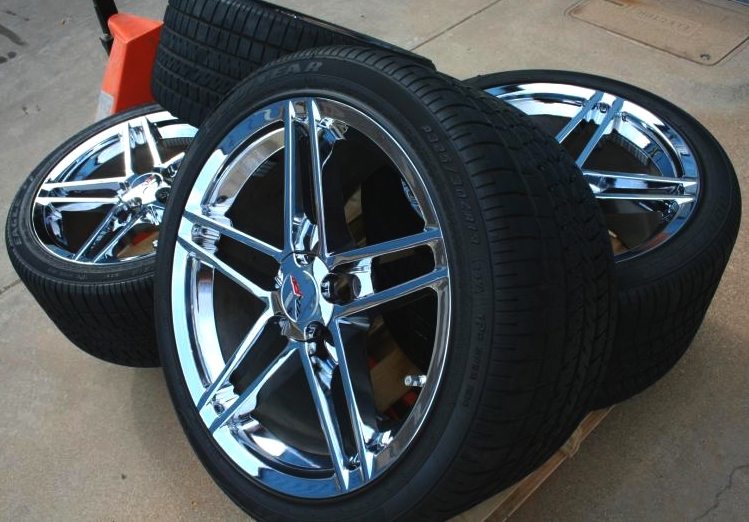
The C6 Corvette is known for using up tires quickly at a rate of about 15-20 thousand miles per set. This is a result of the type of rubber compound used that enable the car to maintain greater levels of traction and to perform at high speeds. Keep in mind that low tire tread does not necessarily indicate aggressive driving. Corvette tires naturally wear more quickly than conventional street car tires, so low tread does not automatically equal burnouts.
High performance tires are expensive and its not uncommon to find C6 Corvettes on the market that have tread-bare tires on them. Sellers will often list their cars after the tires wear out because of the cost of replacing them, leaving the buyer to take on that added cost after they make the purchase.
Should this be a deal killer? Not at all. Just remember that you are going to incur that expense, so use it as leverage when negotiating your sale price with the seller.
It is also worth noting that while the factory setup on Corvettes calls for run-flat tires (tires that can continue to be driven on after the tire has gone flat), it is generally agreed by most Corvette owners that conventional inflatable tires ride better, are quieter and last longer than the run flats. However, it is also worth noting that the C6 Corvette does not come equipped with a spare tire, so if you have a tire go down during any driving condition, you may find yourself stranded until help can come and assist you.
As for the C6’s braking system? Always make a point of checking both the brakes and rotors for signs of wear or aging. Try and determine how much material is left on the brake pad surfaces. Also, pay special attention to the brake rotors for pitting/scarring, especially on models equipped with ceramic brakes. Like the tires, brake work on a Corvette can be expensive. It can also be an indicator of aggressive driving based on how the pads/rotors are worn as well as by how many miles are on the Corvette itself.
Dealer Inspection
It is always a good idea to request your local Chevy dealership perform a complete used car check on any prospective Corvette you might be considering. Chevy’s technicians are specially trained to work on all Chevrolet vehicles, including the Corvette, and will be able to provide valuable insight into the condition of any prospective car. GM mechanics can also run a complete electronic diagnostic of the car you are considering which may identify an issue (or issues) that should be addressed by the current owner.
Similarly, if the current owner of the Corvette had his/her car serviced at a local dealer or service garage, make a point of stopping and asking for a copy of the service records. Like the CarFax report, this information can provide valuable insight into the Corvette you are considering and will help you make the most informed decision possible.
Drive It!
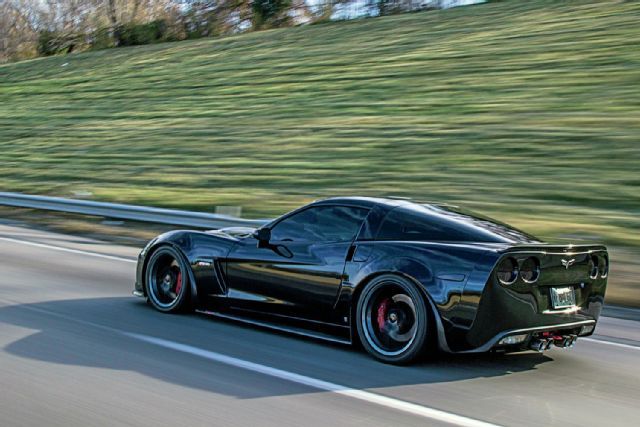
This is one of the most important and valuable parts of the car buying process, but maybe not for the reasons you think. For many consumers, test driving a “new to them” car is no different than driving a brand new car off the showroom floor. They take the car out for a quick spin, play with all the switches, dials and buttons on the radio, make sure everything more or less works, and return quickly to complete the deal.
The test drive is your only true opportunity to fully assess the condition of the car you may be considering purchasing. When you get in the car, turn off the radio immediately and ask the seller to hold off on any further conversation until you complete the test drive. If he/she decides to travel with you, make sure they understand that the purpose of the test drive is to identify any unknown squeaks, rattles, rumbling, etc.
Be intentional during the test drive to listen for any clunks, rattles, whines or any other sound that might cause you alarm. Does the car hesitate or stumble during acceleration? Does the car discharge any smoke (white or black?) Does the removable roof squeak (believe it or not, this is actually commonplace on many C6 Corvettes, and does not necessarily indicate a problem), is the car equipped with any aftermarket modifications?
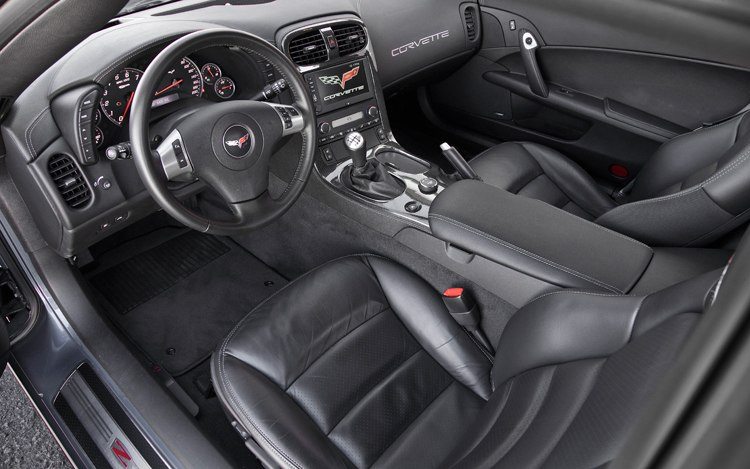
If the answer is yes to any of these, take note of each issue and address it with a qualified mechanic. Failure to do so will likely lead to expensive repairs later. Remember that almost everything on a Corvette is more expensive, so you don’t want to buy into somebody else’s problems before you’ve even had time to enjoy your new car. By the way, roof squeaking during driving conditions (especially during colder driving conditions) is simply the natural body flex of the car. Most removable roofs make some amount of noise. While this can be mildly irritating, it is not cause for alarm.
Prior to starting your test drive, make sure the Corvette you are considering has a full set of functional lights, blinkers, power accessories, seats, windows etc. Take the time to check that everything operates as it is supposed to. Turn the radio on long enough to make sure it works and listen long enough to ensure that the speakers sound clear (buzzing or crackling can indicate a blown speaker). Check the wipers and the washer fluid, check the heat and air conditioning controls, the Heads Up Display (if so equipped) including the HUD controls (located to the left of the steering wheel), all of the vehicle information center buttons (located to the right of the steering wheel), the navigation system (if so equipped), cruise control, fuel tank release, hood release, the parking brake (especially on cars equipped with manual transmission) and even the adjustable suspension system (again, if so equipped.)
Check Recall Data
Even if everything checks out up to this point, there are a few more items worth checking.
Ask the seller (dealer or private owner) for a list of recalls that have been performed on the vehicle. Every C6 Corvette has a list of recalls that have been issued for each model year (you can find the recalls for most C6 models on our website by visiting the model year page (links to each model year can be found earlier in this article under the section “Year by Year – What Are the Differences?”)).
In theory, any recalls that have been issued should be performed/completed by an authorized GM dealership. If the Corvette you are considering has been maintained by a Chevy dealer, these recalls would normally be scheduled during regular maintenance appointments and completed while the vehicle is in for service. The Federal Government requires that all recalls are performed to bring the car up to proper specifications. Obtaining this information from the seller is another measure of the care the car received by its previous owner.
Check the Factory Door Sticker
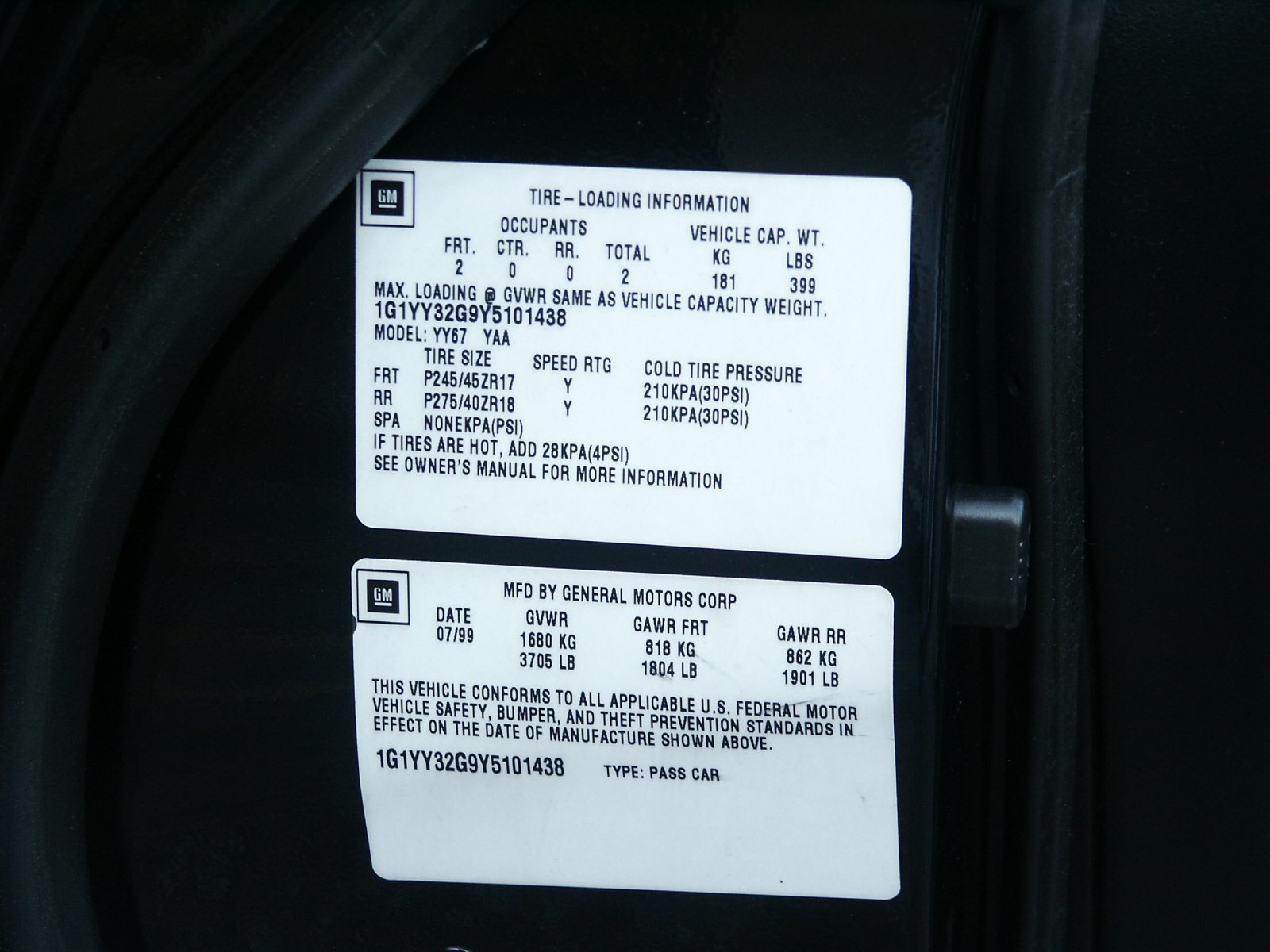
This final item might be a small detail, but definitely one worth noting.
The Factory Door Sticker will is located on the driver’s side outer door jamb. It contains a bunch of information about the Corvette you are looking to purchase including the VIN number and a breakdown of the options included on that particular car. The VIN number on the sticker should match the VIN on the car. If it doesn’t, or if the sticker is missing, this could indicate that the car was involved in an accident that required the door being replaced. This is definitely NOT the only instance where the sticker may be missing, but its absence should be cause for some concern, given that it contains vital information about the car.
While most Corvette owners are ethical and part of a global community that contains some of the finest enthusiasts and owners in the world, it is also an unfortunate reality that many Corvettes do end up being stolen, stripped and sold for parts, or involved in some sort of serious accident before being rebuilt. Taking time to evaluate all of the information – from closely inspecting the vehicle to looking for clues like a potentially missing door sticker – will help make the best choice when purchasing your first, or next, Corvette!
Improving Performance – the Aftermarket Marketplace
With the arrival of the 2020 Mid-Engine Corvette and all that it brings to the table, there are a lot of people who are looking to unload their current Corvettes in favor of buying into the latest iteration of America’s Favorite Sports Car. Because of this, there is an in-flux of used Corvettes appearing in the marketplace, and as the used car market availability of C6 Corvettes increase, the price on these cars continues to gradually go down.
This is good news for the prospective Corvette owner. While the availability of used Corvettes has always made it possible to find a plethora of good deals both at your local dealership and online, the opportunity to own a higher-performance model like the C6 has become increasingly affordable thanks to the evolution of the C7 and now, the C8.
What makes these cars even more appealing to some consumers is the massive availability of aftermarket components for these cars. While a base-model C6 is already impressive with its 400hp (LS2) or its 430hp (LS3) factory engines, the opportunity exists to quickly bolster those horsepower numbers into the stratosphere at a price far more palatable then the sticker shock normally associated with the newer Corvettes available today.
While we won’t fully delve into the broad range of aftermarket bolt-on and performance mods available on all variants of the C6 Corvette, we do encourage you to read our companion piece “The Guide to C6 Corvette Bolt-On Mods.” While this article doesn’t cover everything you can potentially do to improve upon the performance of your Corvette, it will give you some insights on how you can quickly increase engine performance without breaking the bank – and it offers insight into what types of performance gains you can realistically expect when purchasing aftermarket bolt-ons for your C6 Corvette.


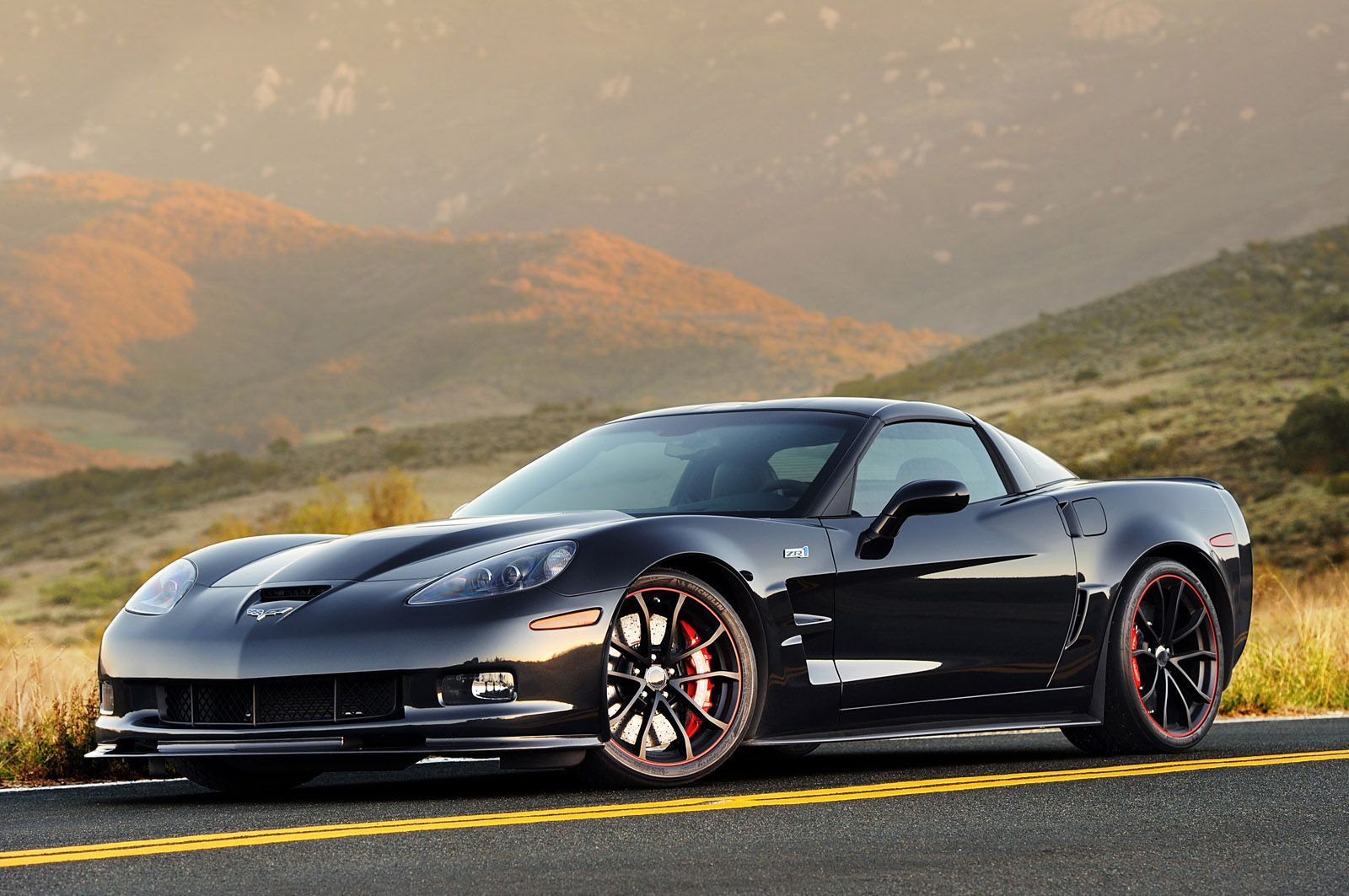
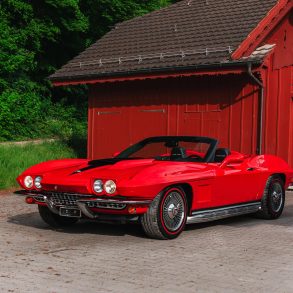

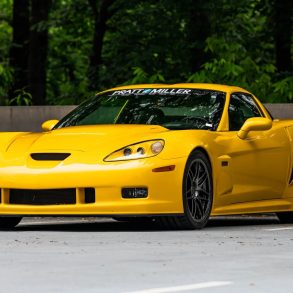
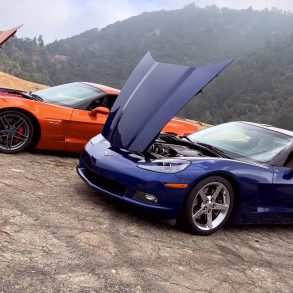
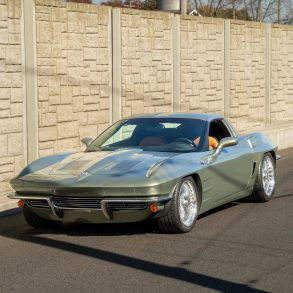
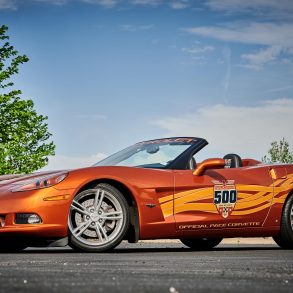
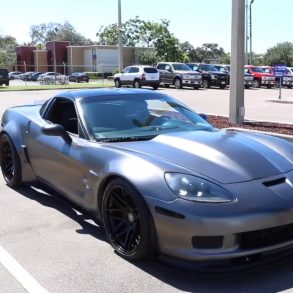
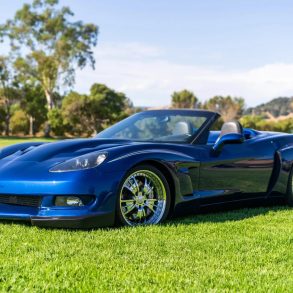

I’ve got a 2008 C6 automatic w/LS3.I want to put a more aggressive sounding muffler on it. Its hard to decide. Any recommendations on mufflers that give that muscle car sound with not an overpowering drown noise on an automatic.
I am now on my 9th corvette and my last was 2004 ZO6 corvette w/magnaflow bullet mufflers
and crossover pipe. I now have C6 6-spd with complete Billy Boat system and I love it,
especially the gurgling sounds when you let off the throttle.